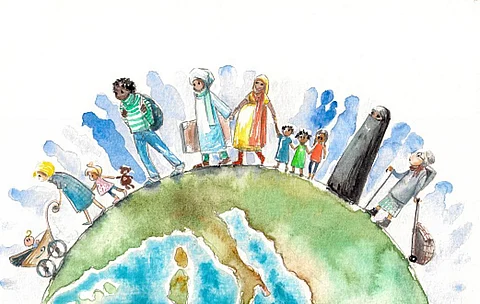

One of the consequences of desertification and land degradation is migration. At the same time, there is a trapped population — people not in a position to migrate during environmental stress, according to a report tabled at the ongoing 14the Conference of Parties to the United Nations Convention to Combat Desertification (UNCCD).
The poors are hit the worst hit due to problem such as desertification; this will increase if corrective measures are not taken, according to the report, Addressing the Land Degradation-Migration Nexus: the Role of The United Nations Convention To Combat Desertification.
“Migration often requires human and financial assets that are not available to all and many socio-economic and political barriers can impede migration,” it added.
The report has different estimates about the possible impacts of desertification, land degradation and drought on migration. It cites two more reports, including one released by World Bank in 2018 that estimated that 140 million people would possibly be internally displaced due to climate change by 2050 across sub-Saharan Africa, South Asia and Latin America.
A 2019 study by Laurent-Lucchetti et al pegged the number of migrants driven by drought to increase by 22 million in Africa, 12 million in South America and 10 million in Asia in 2059 from 2000-2015 levels.
The study commissioned by UNCCD analysed how drought and land degradation affect population movements at the sub-national scale for 2000, ‘05, ’10 and ‘15. It found that generally there is a significant and negative effect of both drought and land degradation.
Most marginalised people are often disproportionally affected by land degradation and drought, the report said.
According to it, about half the population of sub-Saharan Africa lives in drylands; but the percentage of the total poor living there was estimated at 75 per cent. This makes the region one of the most vulnerable when it comes to the negative impacts of environmental and climate changes.
Approximately 80 per cent of the worlds’ extremely poor live in rural areas and land degradation has become an important factor in rural poverty. Nearly three billion — 38 per cent of the global population — lived in dry lands, according to the report.
Based on the findings and future challenges, the UNCCD report recommended that policymakers prioritise these vulnerable areas first while dealing with challenges such as land degradation or desertification.
It also asked for strengthening access to land and tenure in rural and fragile areas and prioritise the creation of dignified, decent and aspirational employment opportunities for migrants.